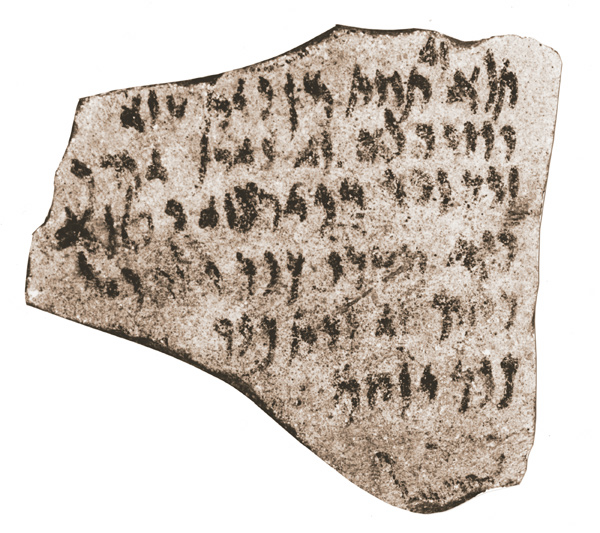Image Details

André Lemaire
Nearly a thousand ostraca (inscribed potsherds) have emerged on the antiquities market in recent decades, most unpublished and many of archeological significance. The ostracon pictured here dates to the fourth century B.C. and lists a number of tax-exempt sacred buildings in Maqqedah, a site about 15 miles west of Hebron, including a “Temple of Yaho” (end of line 2), a “Temple of Uzzâ” (end of line 1) and a “Temple of Nabu” (end of line 5). Yaho is another form of Yahweh, the personal name of the Israelite god; Uzzâ is a north Arabian deity; Nabu is Mesopotamian, the son of the Babylonian god Marduk. The Israelite temple’s presence in Maqqedah—previously unknown—is evidence that the cult of Yahweh had not been fully consolidated by the kings of Judah and made exclusive to the temple in Jerusalem. The only other example of a temple to Yahweh outside of Jerusalem after the seventh century B.C. is one known to have existed in Elephantine, Egypt.
